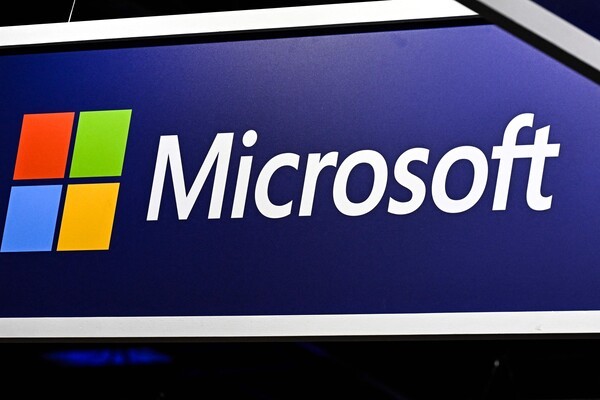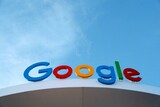MS 365 Copilot integrates Anthropic’s Claude, signaling a new multi-model AI era
Microsoft (MS) has begun a significant strategic pivot in its generative AI approach. On September 24 (local time), the company announced that it is integrating Anthropic’s AI model into MS 365 Copilot, moving beyond its exclusive reliance on OpenAI.
This development goes beyond a simple feature expansion. It marks a fundamental transition in Microsoft’s AI strategy—shifting from an exclusive partnership with OpenAI to a broader collaboration across the AI ecosystem. In a rapidly intensifying AI market, Microsoft’s move reflects its bid to ensure both technical diversity and competitive strength.

Claude Opus 4.1 Powers MS 365 Researcher
Anthropic’s latest model, Claude Opus 4.1, has been embedded into the Researcher feature within MS 365 Copilot. This tool assists users in gathering and analyzing information, drafting reports, and streamlining workflows.
Additionally, Microsoft is expanding early access programs like Frontier, offering enterprise customers the option to use Anthropic’s models alongside OpenAI’s. Claude’s ability to break down complex tasks into manageable steps is considered particularly effective for business automation.
Copilot Studio Enables Custom AI Agents
Microsoft has also introduced Anthropic’s Claude Sonnet 4 and Claude Opus 4.1 to Copilot Studio, a platform that allows enterprise clients to design and deploy custom AI agents. This expansion goes beyond simple Q&A, extending AI’s role into decision-making support and document automation.
Charles Lamanna, Corporate VP of Business and Industry Copilot at Microsoft, stated in a blog post: “Anthropic’s AI models will deliver even more powerful experiences across MS 365 Copilot.”
$13 Billion Invested in OpenAI- But Exclusivity Ends
Microsoft has been OpenAI’s largest backer, investing over $13 billion and hosting its models on Azure. For years, this partnership positioned MS as the primary distribution channel for OpenAI’s technology.
However, signs of diversification began as early as 2023, when GitHub Copilot Chat incorporated not just OpenAI models but also those from Anthropic and Google. The integration of Claude into MS 365 marks the continuation of this shift.
A Multi-Front AI Battle Emerges
The generative AI industry is entering a new phase of multi-party rivalry. While OpenAI remains tightly aligned with Microsoft, it has also forged partnerships with Oracle, Broadcom, SoftBank, and NVIDIA to expand infrastructure and investment capacity.
Notably, its $300 billion collaboration with Oracle for AI data centers underscores the escalating scale of AI investment. Additional deals include a $10 billion contract with Broadcom, multi-billion-dollar funding talks with SoftBank, and NVIDIA’s pledge of up to $100 billion in support.
In this climate, Microsoft’s embrace of Anthropic - and potentially other partners- reflects the dawn of a “multi-model strategy,” a move to strengthen its foothold in the generative AI ecosystem.
Why Microsoft’s “Two-Track” AI Strategy Matters
Three factors underpin Microsoft’s decision to reduce reliance on OpenAI and adopt Anthropic’s models:
Risk Mitigation through Diversity – Over-dependence on one model creates vulnerabilities if technical or ethical issues arise. A diverse set of AI partners reduces this risk.
Fit-for -Purpose AI Performance- With enterprises requiring different AI capabilities depending on context, the ability to choose between models like GPT and Claude enhances flexibility. Claude, for instance, excels in summarization and logical reasoning.
Competitive Edge in a Crowded Market – Rivals such as Google (Gemini), Amazon (with Anthropic investment), and Meta (open-source AI) are expanding aggressively. Microsoft’s multi-model ecosystem ensures agility in this competitive race.
The Future of Generative AI: No Single Path
Microsoft and OpenAI’s relationship remains strong, but the industry has clearly entered a multi-model era. The integration of Claude into MS 365 Copilot symbolizes this new reality: a landscape where multiple advanced AI systems compete, coexist, and complement one another.
For enterprises and end users alike, the future is no longer about choosing one model—it’s about selecting the right AI partner for the right task. And Microsoft has positioned itself at the center of this paradigm shift.
By Tech Columnist “풍운아” / scienceazac@naver.com
- NVIDIA Bets $100 Billion on OpenAI: The Dawn of an AI Power Shift
- NVIDIA Opens AI Avatar Source Code, Shaking Up Gaming and Metaverse Markets
- Perplexity Makes AI Web Browser ‘Comet’ Free Worldwide
- NVIDIA’s $2.8 Billion Bet on Elon Musk’s xAI: The Hidden Strategy Behind Its GPU Empire
- Anthropic Unveils “Claude Haiku 4.5”: Faster, Cheaper, and Smarter Than GPT-5

![[동학] 카카오톡 친구탭, 결국 12월 롤백… “격자형 피드는 선택 옵션으로”](https://cdn.kmjournal.net/news/thumbnail/custom/20251126/5517_10550_1119_1763853080_120.jpg)


![[테크 칼럼] 제미나이3, GPT-5.1을 넘다…AI는 이제 ‘일을 대신하는 시대’로 간다](https://cdn.kmjournal.net/news/thumbnail/custom/20251126/5457_10454_4847_1763621329_120.jpg)





